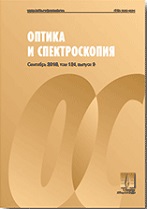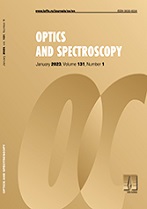|
Nanophotonics
Charge transfer from lead sulfide quantum dots to MoS2 nanoplatelets
I. D. Skurlov, A. S. Mudrak, A. V. Sokolova, S. A. Cherevkov, M. A. Baranov, A. Dubavik, P. S. Parfenov, A. P. Litvin
ITMO University, St. Petersburg, Russia
Abstract:
The research interest in the transition metal dichalcogenides (TMD) has been reborn a few years ago. This had happened due to the remarkable properties of monolayered TMD (e. g. high carrier mobility and high exciton binding energy) and due to the development of the exfoliation methods. Photoconductive MoS2-based devices spectral range can be expanded to the NIR by coupling them with PbS QDs. However, this requires extensive knowledge about the the charge and energy transfer processes in such systems. In this paper, we investigate charge transfer between PbS QDs and MoS2 nanoplatelets (NPls). Using the PL decay analysis, we show how the charge transfer efficiency changes with the distance between the QDs and NPls, as well as with QD size. Last, we demonstrate that the addition of the MoS2 NPLs increases the photoconductive response for up to an order of magnitude, as compared to the bare QD.
Keywords:
transition metal dichalcogenides, quantum dots, charge transfer, lead sulfide, molybdenum disulfide.
Received: 18.01.2020
Revised: 18.01.2020
Accepted: 20.04.2020
Citation:
I. D. Skurlov, A. S. Mudrak, A. V. Sokolova, S. A. Cherevkov, M. A. Baranov, A. Dubavik, P. S. Parfenov, A. P. Litvin, “Charge transfer from lead sulfide quantum dots to MoS2 nanoplatelets”, Optics and Spectroscopy, 128:8 (2020), 1193; Optics and Spectroscopy, 128:8 (2020), 1236–1240
Linking options:
https://www.mathnet.ru/eng/os346 https://www.mathnet.ru/eng/os/v128/i8/p1193
|


| Statistics & downloads: |
| Abstract page: | 47 | | Full-text PDF : | 17 |
|





 Contact us:
Contact us: Terms of Use
Terms of Use
 Registration to the website
Registration to the website Logotypes
Logotypes









 Citation in format
Citation in format 